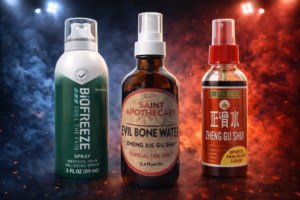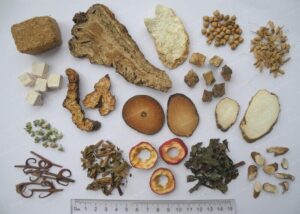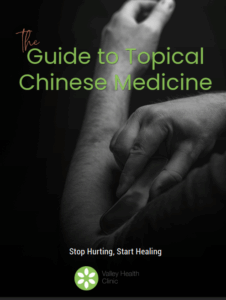Contrary to popular belief, muscle cramping after exercise has little to do with dehydration and electrolyte imbalance. While hydration and electrolyte restoration are important following a bout of intense exercise, there’s much more to cramping than formerly understood.
In this article, we will discuss the real reasons behind exercise-induced muscle cramping and address treatment methods for this condition.
Myth of Electrolytes
A study of 43 triathletes reported cramping (cramping group) and were compared with the 166 who did not report cramps (non-cramping group). There were no significant differences between groups in any pre-race–post-race serum electrolyte concentrations and body weight changes. The development of cramps was associated with faster predicted race times and faster actual race times, despite similarly matched preparation and performance histories in subjects from both groups. A regression analysis identified faster overall race time (and cycling time) and a history of cramping (in the last 10 races) as the only two independent risk factors for exercise associated muscle cramps (EAMC).
The study suggests that electrolyte levels are not a factor in cramping. Rather, competing at a faster pace and high intensity then what is normal can cause (EAMC). So why is this? The most up-to-date scientific theories attribute exercise-induced cramping to a body state called “alpha motor neuron excitability”. It may sound complicated, but alpha motor neuron excitability is relatively easy to understand and identify.
Read more: https://bjsm.bmj.com/content/45/8/650.short
Alpha Motor Neurons Explained
Alpha motor neurons (also referred to as alpha motoneurons) are an essential part of the body’s central and peripheral nervous systems. They’re present in the brainstem and spinal column, and they’re directly responsible for telling muscles when to contract.
Any time you contract (flex) a muscle to make a movement (for example, when you take a step, grasp a pencil or touch a finger to your nose), you’re putting your alpha motor neurons to use. During a bout of intense exercise, your alpha motor neurons work overtime.
Importantly, when it comes to understanding muscle cramps: the more active your alpha motor neurons are, the more prone your muscles are to contracting when you don’t necessarily want them to.
What is Alpha Motor Neuron Excitability?
Alpha motor neurons are an essential part of the body’s nervous system. However, they must strike a delicate balance with other neurons and body systems for your muscles to work correctly. One of these balancing agents is the Golgi tendon organ, which we’ll discuss in more depth further on.
When these systems become out of balance, your alpha motor neurons aren’t properly kept in check, and they enter a state of excitability. And since alpha motor neurons cause our muscles to contract, the result of this excitability is involuntary and prolonged muscle contraction: i.e. muscle cramps.
Causes of Alpha Motor Neuron Excitability
There are several factors that can cause alpha motor neuron excitability, including the following:
- Fatigue
- Dehydration and/or malnutrition
- Inadequate conditioning
- Muscle damage
Just one of these factors can lead to alpha motor neuron excitability and subsequent muscle cramping. However, the real problem begins when several of these factors coalesce, causing more severe excitability, and therefore, more intense pain.
Understanding the Golgi Tendon Organ
As briefly mentioned above, the Golgi tendon organ (GTO or tendon spindle) is one of the most important balancing agents to the body’s alpha motor neurons. Golgi tendon organs are proprioceptive sensory receptor organs, located in the tendons, adjacent to the myotendinous junction (MTJ).
So, how do the Golgi tendon organs located in the tendons keep alpha motor neurons in balance, and how can this aid in treating muscle cramps?
The Golgi tendon organ performs almost the opposite role of alpha motor neurons. Whereas alpha motor neurons tell your muscles to contract, the GTO’s role is to make sure your muscles don’t contract too forcefully.
When the body is fatigued, not only does alpha motor neuron activity increase, but Golgi tendon organ activity decreases, furthering the potential for unwanted muscle contractions.
This is important in understanding muscle cramps and how to treat them because by stimulating the Golgi tendon organ, we can essentially “switch off” unwanted muscle contraction.
The Answer is TRP Channels
If you’re familiar with the electrolyte depletion theory, you may be familiar with the theory that pickle juice relieves muscle cramps. It was originally thought that pickle juice does this by balancing electrolytes in the body. We now know this is not true. A study by Miller found that it takes pickle juice 30mins to leave the stomach and that the cramp revealing effects happens much faster. Instead, the researchers theorized that pickle juice worked to inhibit the firing of alpha motor neurons by triggering a reflex-response in the mouth, throat and stomach called transient receptor potential (TRP) channels.
https://www.ncbi.nlm.nih.gov/pubmed/19997012
https://www.ncbi.nlm.nih.gov/pubmed/21062184
TRP Channels and Muscle Cramps
TRP channels are pathways through which the body transports positively charged ions (i.e. magnesium, sodium, and calcium). These pathways, or channels, can be stimulated by small molecules like capsaicin and menthol, and by spices like red pepper, cinnamon, ginger, and mustard.
Numerous physical scenarios can also be explained by the alpha motor theory, where they cannot be explained by the traditional serum electrolyte depletion theory alone. For example, marathon-runners often suffer cramps when fully hydrated and electrolyte-balanced
TRP channels help the body rapidly and accurately interpret the surrounding environment and adapt. And when it comes to muscle cramping, strong simulation of the TRP channels can calm alpha motor neurons and diminish cramping (fasebj.org)
Read More: https://www.sciencedirect.com/topics/neuroscience/transient-receptor-potential-channel
Cramps and the Taste of Herbal Medicine
Since ancient times, Chinese herbalists have classified medicinal materials according to their tastes. The taste was understood to have a relationship to the effect of the herb when ingested. This relationship was seen as having great importance in guiding the combining of herbs within formulas. In most traditional Chinese herb books, taste was the first property of an herb to be mentioned, helping to orient the reader to the information that followed. There are five tastes—sweet, salty, sour, bitter, and acrid (sometimes called pungent or spicy)—consistent with the five element concept.
It is reasonable to raise the question whether or not the tastes really have a strong correlation with herbal effects. Now that we know about Transient receptor potential channels and their location in the mouth and esophagus, the answer to this is yes.
If we take pickle juice as an example of a way to control cramps and overexertion. It’s flavor is sour. Lemonade is another example of how sour can control the outward energy of excessive sweating and fatigue. There is norther better then a cool glass of lemonade on a hot day.
There are two major connotations of the sour taste in Chinese medical theory:
- In five element systematic correspondence, the sour taste is associated with the liver. It has a moistening and softening effect, usually reducing contraction of the ligaments and tendons. Persons who are overly flexible may find that the sour tasting herbs worsen that condition. Peony, cornus, achyranthes, are among the main sour herbs used to affect the liver function and said to relax the tendons.
- According to the taste/action dogma, the sour taste has an astringent and fluid recollecting function (that is, helping to reabsorb fluids as they begin to escape). Chinese medicine considers the sour and astringent qualities as restraining the leakage of any fluid, including perspiration, and blood. Tannins, a class of complex molecules with notable astringent effect, are present in some of the herbs. Schizandra, terminallia, cornus, and sanguisorba are commonly used as astringents.
Here is a Formula that can help with muscle spasm and cramps:
- Bai Shao (Radix Paeoniae Alba) and Gan Cao (Radix Glycyrrhizae) are commonly combined to relieve muscle spasms and cramps. Clinically, they may be used for musculoskeletal spasms and leg cramps associated with external or sports injuries.
- (Radix Paeoniae Alba) and Gan Cao (Radix Glycyrrhizae) have strong antispasmodic and anti-inflammatory effects as confirmed by modern research. Furthermore, Bai Shao (Radix Paeoniae Alba) and Gan Cao (Radix Glycyrrhizae) are effective in treating both skeletal and smooth muscles.
Summing Up Exercise-Induced Muscle Cramps
It’s easy to see how muscular fatigue—like that following a bout of intense exercise — can wear down the body’s natural systems and balances, leading to muscle cramps. When the body is fatigued, alpha motor activity increases and Golgi tendon organ activity decreases, leading to painful and involuntary muscle contraction. But by understanding the root cause of exercise-induced muscle cramps, and that TRP and taste has a strong we can better treat the issue in sports acupuncture and herbal medicine.


 Willard Sheppy is a writer and healthcare practitioner who seamlessly melds scientific knowledge with practical applications in engaging and authoritative articles. He holds a Bachelor of Science in Environmental Science from Oregon State University and a Master’s in Acupuncture and Oriental Medicine from the distinguished Oregon College of Oriental Medicine.
Willard Sheppy is a writer and healthcare practitioner who seamlessly melds scientific knowledge with practical applications in engaging and authoritative articles. He holds a Bachelor of Science in Environmental Science from Oregon State University and a Master’s in Acupuncture and Oriental Medicine from the distinguished Oregon College of Oriental Medicine.




